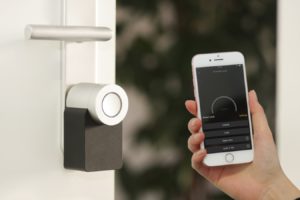
Debunking The Most Common Home Security Myths
In 2017 there were an estimated 1.4 million burglaries in the U.S., with over 67% of all burglary...

Restrictions apply*
Security Doctors reguarly publishes crime data on the safest and most dangerous neighborhoods in Chicago.
Some places are safer than others, of course, but property crimes (burglary, theft, and motor vehicle theft) for the state as a whole total 262,306 per annum. You’re nearly five times more likely to be a victim of property crime than violent crime, and one of the most dangerous assumptions you can make is that it can’t happen to you. Rather than worrying, however, the best step to take is protecting your home and family with a home security system installation by Security Doctors Illinois. Rather than simply shopping on price, here are five key considerations for your home security system.
Just as crime rates aren’t evenly distributed, neither are the types of crime. If your area is especially susceptible to home break-ins, the kind of equipment in which you invest may be different than if you live in an area that experiences a lot of car theft. Research your area, and get a professional security consultation to make an informed decision.
A home security system is vital, but there’s more to home security than just preventing break-ins. If you’re a caregiver to an elderly family member, you may want to monitor their slip and fall risk; likewise, if you have a collection that’s valuable — old coins, antiques, or a gun safe, for instance — there are asset protection measures you can take that protect specific property in more robust ways.
Not all security systems are created equal. Some systems come with only a bare minimum number of components, and may not protect enough; a few door and window sensors alone will not ensure the highest level of protection. Likewise, something that is merely a burglar alarm with a few extra bells and whistles won’t provide the same peace of mind as something that provides CCTV coverage that can catch a culprit in the act. Finally, a self-installed and self-monitored system has drawbacks that a system using continuous remote monitoring would not.
This is a three-fold process. First, take into account the number of potential entry points in your home. That means not only doors, but also windows. Second, think about other hazards — smoke, fire, carbon monoxide, and burst pipes among them — against which you’d like to guard. Third, consider your level of connection; some of us have gone all-in on smart homes and home automation, and a security system installed in that environment affords you some unique opportunities for additional protection via home security apps.
It’s easy to find a security system that you can install and monitor yourself. They’re numerous, they’re advertised widely, and they’re cheap. That economy comes at a cost, however. Those systems are often simplified for easier installation, and may not come with the same kind of monitoring that you’d get from a professional security installation. There is an admitted cost difference, but in the end, many homeowners find it’s worthwhile.
If you’re an Illinois homeowner weighing your options for home protection, contact Security Doctors Illinois today for a free security consultation. We’ll assess your needs and customize a solution that keeps your home and everyone in it safe and sound.

In 2017 there were an estimated 1.4 million burglaries in the U.S., with over 67% of all burglary...

By 2024, retail e-commerce sales will reach a whopping $476 billion in the U.S. alone. With this sweeping...

Security solutions for homes are more advanced and convenient to use than ever before. Over the last decade...